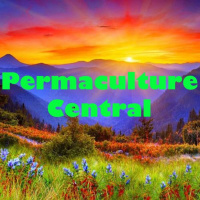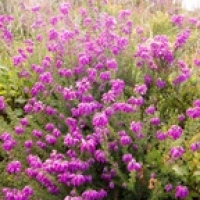The Plant Report- Every Plant Has A Story
- Author: Vários
- Narrator: Vários
- Publisher: Podcast
- Duration: 19:17:08
- More information
Informações:
Synopsis
Learn about the botanical world one plant at a time. The Plant Report is a new educational resource about plants, herbal medicine, ethnobotany and the human/plant relationship. The Plant Report is a project of Sustainable World Radio.
Episodes
-
The Beautiful Rose
24/10/2015 Duration: 33minEpisode 18: Our plant for this episode is the Rose. Roses are edible, medicinal, and therapeutic. To learn about this beautiful plant, I spoke with Linda Buzzell Saltzman, an Eco-Therapist and Rosarian who grows roses in and around her backyard food forest. Linda talks about the history of roses, the benefits of growing heritage roses, and why the concept of "right rose, right place" is important. Linda also shares recipes and gardening tips. After hearing about Roses, you may be tempted to become a rose rustler. To learn more about heritage roses, visit Linda's blog by clicking here.
-
Amazing Yeast- Tiny, Ubiquitous, and Invaluable
14/08/2015 Duration: 17minEpisode 17: Our plant for this episode is not a plant. It's yeast. Tiny in size, huge in utility, yeast is all around us. Found in the Ecuadorian Rainforests, the Arctic, and on our skin, this single-celled member of the Fungi Kingdom is part of Nature's Recycling Team and has been on the planet for millions of years. Used for brewing and baking, humans have enjoyed a long and fruitful relationship with yeast. In this episode, Dr. Ian Roberts of the National Collection of Yeast Cultures (NCYC) talks about yeast: its history, what it needs to survive, its role in the ecosystem, and the process of fermentation. Dr. Roberts is the curator of more than 4,000 strains of yeast collected over 65 years at the NCYC. To learn more about the NCYC and its heritage collection of UK brewing yeast visit their website.
-
Kalo- An Important Hawaiian Plant
11/07/2015 Duration: 21minEpisode 16: In this episode we talk about Kalo or Taro, Colocasia esculenta. To learn about this staple of the Hawaiian diet, we visit the Maui Nui Botanical Gardens located in Kahului on the island of Maui. At Maui Nui, we speak with Tamara Sherrill and John Aquino. Former Plant Collections Manager, Tamara is now Maui Nui's Executive Director. Tamara describes several old Hawaiian varieties of Kalo, Kalo propagation, and Native and Canoe Plants. We also talk with farmer and Hawaiian Plant Expert John Aquino about what parts of the Kalo are edible, how it's grown, his farm on Maui, and traditional Hawaiian farming methods. To learn more about the Maui Nui Botanic Gardens, visit their website at MNBG.org.
-
The Magic of Mulberries
14/06/2015 Duration: 15minLoren Luyendyk has been working with Mulberry Trees for over 15 years. In this episode Loren talks about why he thinks more people should be growing this incredibly versatile plant. Did you know that Mulberry Trees can adapt to almost any soil type? That they are hardy to drought and temperature extremes? Learn the best way to propagate Mulberries and the medicinal uses of Mulberry leaves and root bark. The Mulberries themselves are delicious and high in Vitamins A and C. Loren Luyendyk is a Permaculture teacher, designer, and owner of Santa Barbara Organics.
-
The Winter Squash Fan Club
17/04/2015 Duration: 20minEpisode 14: Are you a winter squash fan? If not, you may become one after hearing organic farmer and seedsman Justin Huhn talk about one of his favorite crops- Winter Squash or Cucurbita. In this episode, Justin gives us his tips on growing this beautiful and productive plant. He also talks about how to save squash seeds and shares his favorite recipe. Delicious and nutritious, winter squash is a great plant for home gardens. Justin is the founder of The Seedkeepers, an educational company dedicated to teaching people how to grow food and save seeds. To learn more about Justin's work, visit The Seedkeepers.com.
-
Thistles- The Prickly Plant With An Important Job
28/03/2015 Duration: 14minEpisode 13: Ecological Designer and Permaculture Instructor Larry Santoyo talks about thistles. More interesting than you might think, thistles play an important role in soil restoration. Larry tells us about the intrinsic characteristics of thistles, why the Earth calls them in, and what effect they have on the landscape. After listening you may gain a new appreciation for this prickly, unpopular plant! To learn more about Larry Santoyo visit his website at: The Permaculture Academy.com To read an interview with him click here. To listen to an interview, click here.
-
Chaya- The High Protein Greens You've Never Heard Of
14/03/2015 Duration: 17minChaya (Cnidoscolus chayamansa) commonly called Tree Spinach is a very nutritious plant with high protein, iron, calcium, phosphorus, and vitamins. Reaching 3 meters (10 feet high), Chaya has maple-shaped leaves that are delicious steamed or cooked. Chaya is resistant to disease and pests, is highly productive, and needs little inputs to thrive in both arid and rainy areas. A fast-growing perennial shrub, Chaya is easily propagated by stem cuttings. To learn about Chaya, I spoke with Dr. Anabel Ford, director of the MesoAmerican Research Center. To hear Dr. Ford and some of the Mayan Forest Gardeners in a 2008 interview on Sustainable World Radio, click here. Note: Chaya contains hydrocyanic glycosides, some people recommend cooking it before eating it.
-
Moringa- The Miracle Tree
15/11/2014 Duration: 08minMoringa is called the Miracle Tree and after listening to this episode, you'll know why! Native to Africa and Asia, Moringa offers a plethora of benefits. Fast and easy to grow in the right climate (tropical and sub-tropical), Moringa is loaded with nutrients. Many parts of the Moringa are edible and/or medicinal, including the leaves, oil, bark and gum. To learn about this marvelous tree, I spoke with plant expert and Permaculture designer Julious Piti. Based in Zimbabwe, Julious is the founder of PORET, an organization that supports farmers in dryland areas and works to address hunger, malnutrition, and poverty. Click Here to listen to a longer interview about the Real Green Revolution in Africa with the inspiring Julious Piti. For those listeners who don't live in a sub-tropical or tropical climate, I'm growing two healthy Moringa trees in a Mediterranean climate. I've heard of people in colder areas who grow Moringa outside in warmer months and in green houses when it's cool.
-
Outdoor Mushroom Cultivation
17/09/2014 Duration: 29minIn this episode of The Plant Report, we talk with Michael Judd about outdoor mushroom cultivation. Growing mushrooms at home is fun, surprisingly easy and offers multiple benefits including a delicious medicinal crop, increased mycelium in your soil and mycoremediation opportunities. In the interview, Michael talks about different growing techniques, including log and mulch cultivation and walks you through everything you need to know to start your first backyard (or patio) mushroom crop! Michael Judd is a Permaculture designer, teacher, author of Edible Landscaping With A Permaculture Twist and all around Fun-gi. He's just launched a campaign to help fund his new book- A Guide To Backyard Mushroom Growing. If you'd like to learn more, check out Michael's Kickstarter campaign by clicking here or visit his website, Ecologiadesign.com.
-
Hala- The Hawaiian PVC Pipe
24/08/2014 Duration: 11minWe met with farmer and Hawaiian plant expert John Aquino on the beautiful grounds of the Maui Nui Botanical Gardens located on the island of Maui. In this episode, John talks about the many uses of Hala- Pandanus tectorius. Hala can be woven into floor mats, canoe sails, and baskets. Hala is a famine food, has male and female trees and its trunk can be used for irrigation. John calls Hala- the Hawaiian PVC Pipe! To schedule a tour of Maui Nui Botanical Gardens click here. Maui Nui Botanical Gardens is the only botanical garden in the state of Hawaii located on a coastal dune system that features native Hawaiian coastal and dry forest plants. Their website:www.MNBG.org.
-
Feijoa- An Affable Edible Plant
13/07/2014 Duration: 18minFeijoa, Acca sellowiana, popularly known as pineapple guava is an easy to grow shrub with beautiful edible flowers and fruit that tastes like the tropics. To learn more about this delicious temperate sub-tropical plant, I spoke with Mark Albert, an expert in all things Feijoa. Mark Albert is a naturalist and rare fruit grower who specializes in self-sufficient year-round food production.
-
Bunya-Bunya Tree
19/05/2014 Duration: 17minThe Bunya-Bunya (Araucaria bidwillii) is a tall, evergreen coniferous tree with large, edible and high carbohydrate nuts. In this Plant Report, Permaculture designer and horticulturist Byron Joel talks with Jill Cloutier about the Bunya-Bunya; its growing habits, history and untapped potential as a perennial staple crop. (Just watch out for those bowling ball sized falling cones!)
-
Goumi- A Beautiful Bush With Benefits
01/04/2014 Duration: 13minGoumi is an attractive shrub that is useful in edible landscaping. Renowned for its beauty and delicious medicinal berries, goumi is easy to grow, drought tolerant and fixes nitrogen- making it a valuable soil amender. Goumi's fragrant cream colored flowers attract pollinators, birds and people to your garden. To learn more about goumi, Jill Cloutier spoke with Michael Judd, Permaculturist and author of the new book Edible Landscaping With A Permaculture Twist-How To Have Your Yard And Eat It Too. Michael is a big fan of the goumi and its many benefits. (Photo of goumi courtesy of Michael Judd.)
-
Arracacha- The Peruvian Parsnip
17/03/2014 Duration: 16minArracacha, Arracacia xanthorrhiza, is a perennial vegetable from the Andes. To learn more about this staple food crop I spoke with Permaculturist and plant expert Byron Joel. Delicious in flavor, Arracacha is a member of the Apiaceae family and is easy to grow and propagate. High in nutritional content the root can be roasted or pureed and makes an excellent soup. Plant some Arracacha today not only for yourself, but also for all of the beneficial insects that this plant will attract to your garden.
-
Ashitaba- Nature's Super Food
23/02/2014 Duration: 09minAshitaba is a plant rich in antioxidants, vitamins and chlorophyll. Also called Tomorrow's Leaf, Ashitaba is known for its quick regeneration and healing properties. To learn more about Ashitaba, Jill Cloutier interviewed John Glavis of Botierra Biodiversity Farms at the Heirloom Expo Heirloom Expo in Santa Rosa, California.
-
Titan Arum-The Largest Unbranched Inflorescence In The World!
12/01/2014 Duration: 18minTitan Arum may have one of the smelliest flowers on the planet (think old gym socks), but it's also one of the largest and most beautiful. Known as the carrion or corpse flower, Titan Arum gives off a pungent scent that's perfect for attracting flies, beetles and other decomposers. Native to Sumatra, Titan Arum rarely blooms in the wild or in captivity and is a threatened species. I was lucky enough to see, smell and spend some time with a Titan Arum named Chanel at the University of California's Biology Greenhouse. In this episode I speak with Danica Taber, Biology Greenhouse Manager about this famous plant that has its own Facebook page and thousands of fans!
-
Comfrey- A Plant With Many Uses
28/12/2013 Duration: 11minComfrey (Symphytum officinale) is a gardener's friend. A plant with many benefits, comfrey can be used as medicine, mulch, liquid fertilizer, compost and chicken feed. Comfrey has a deep tap root that can mine the soil for nutrients and minerals. Used in herbal medicine for thousands of years, comfrey is said to help heal wounds and bruises. In this episode, Permaculture teacher and farmer Julious Piti talks about comfrey and how to use it.
-
Nature's Medicine Chest- Elder (Sambucus)
22/04/2013 Duration: 15minKnown as the Tree of Music and Nature's Medicine Chest, Elder has a long history of medicinal and musical use. Elderberries and flowers are a popular herbal remedy and elder branches can be used to make musical instruments. Steeped in folklore, Elder is revered in many cultures. To learn more about Elder we speak with environmental educator and natural dye and fiber expert Rebecca Burgess and herbalist Lanny Kaufer about this remarkably useful and healing plant.































